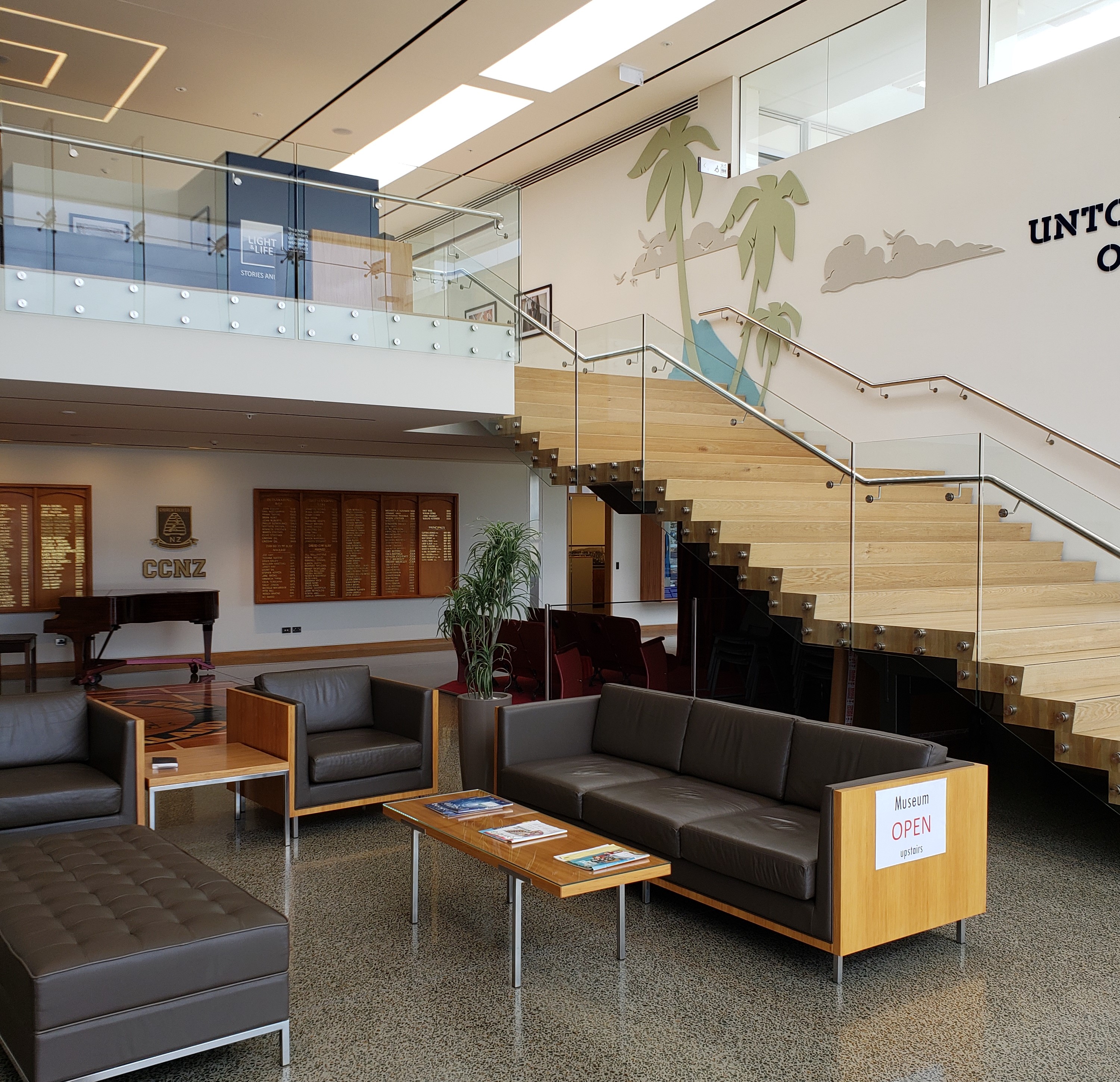
The foyer of the Matthew Cowley Pacific Church History Centre. The Centre is housed in the former library building of the Church College of New Zealand, which closed in 2009
By the time we arrived in Hamilton, we thought we had a pretty good idea of what our assignments at the Matthew Cowley Pacific Church History Centre would be, but actually, we didn’t.
What we had been told was that the MCPCHC had more than 70,000 documents, photographs, and artifacts that needed to be properly labeled, organized, and cataloged, so Michael expected to use his IT skills to write or adapt cataloging software to manage the collection, while Nancy expected to use her writing and editing skills to create accurate labels and catalog descriptions. Nancy also had been told that she would function as the manager of the Centre’s museum, which had been described as very small. She would greet visitors, oversee the volunteer docents, and ensure that any problems arising with museum equipment or displays were resolved.

The staff workroom
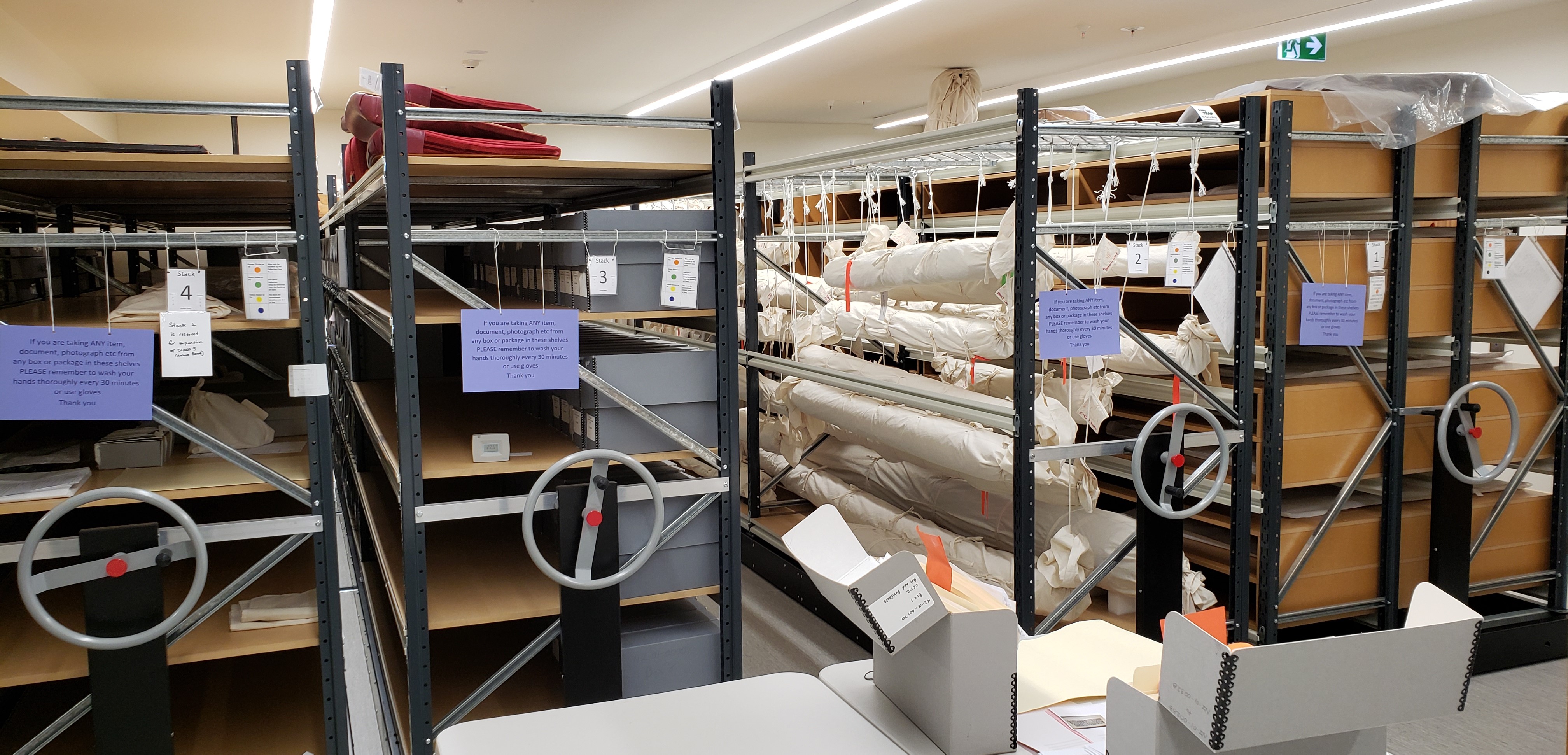
Record Preservation Centre archive room
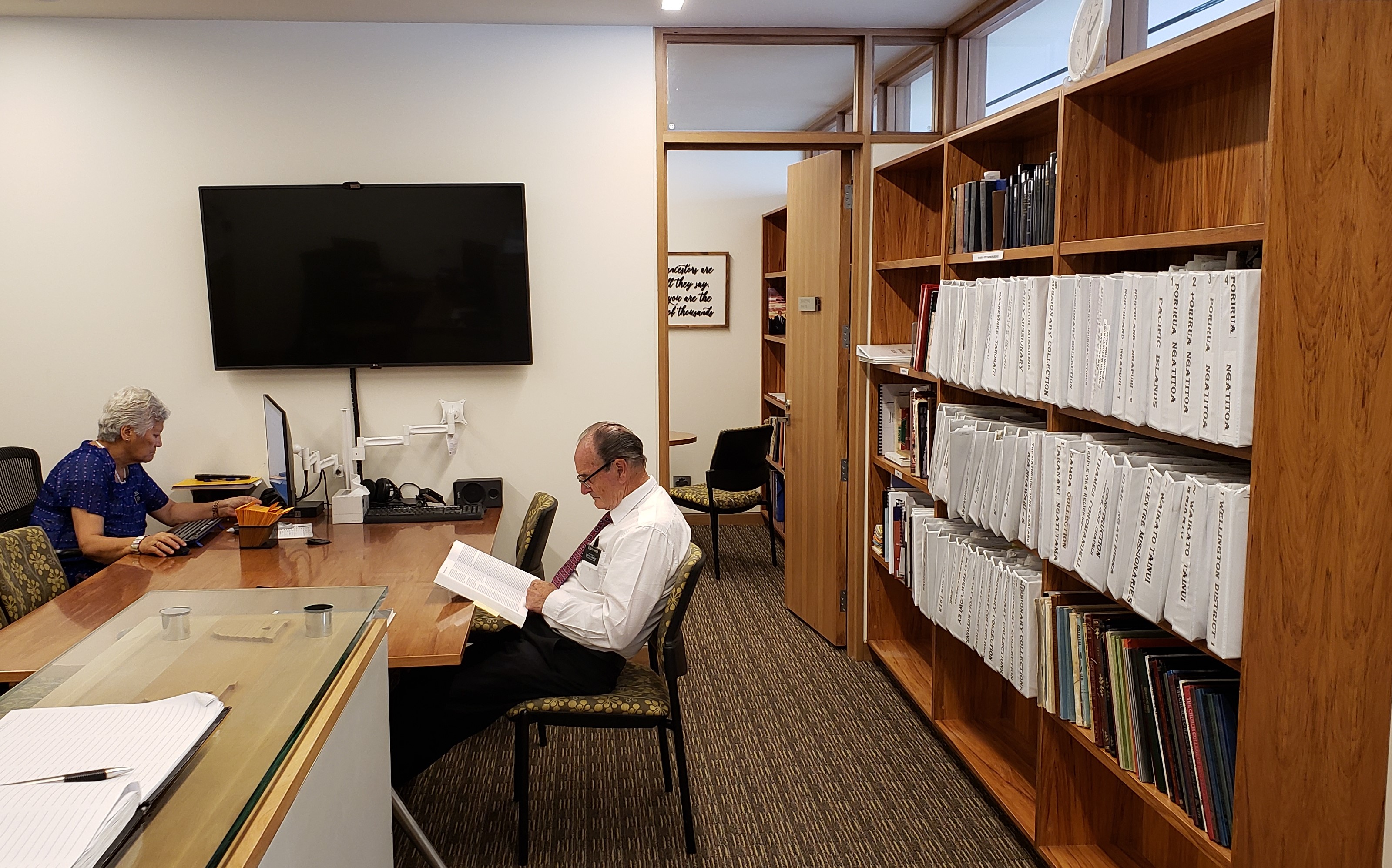
History Centre library and reading room
Barry and Eva had told us that because the Hamilton Temple is currently closed for a three-year renovation, attendance at the Centre has gone way down since it opened in June 2017. “To encourage more visitors,” they said, “we’ve been visiting ward councils in the area and inviting them to bring their ward members to the Centre’s theatre for special programs.” Thus we didn’t expect much daily traffic in the museum, and pictured ourselves spending most of our time planted in front of computers in the office.
Here’s the reality: While the museum at the MCPCHC is not on a par with Cincinnati’s 500,000-square-foot Museum Center or even the 63,500-square-foot Church History Museum in Salt Lake City, at about 5,000 square feet it’s much bigger than we expected. One of Nancy’s primary duties is to go through the museum every day before opening hours, dusting display cabinets, wiping fingerprints off the touchscreens, sanitizing pushbuttons, tidying the old school uniforms that visitors can try on, adjusting volume levels on the videos, and making sure that all the electronic equipment is working properly—a process that takes about 45 minutes.
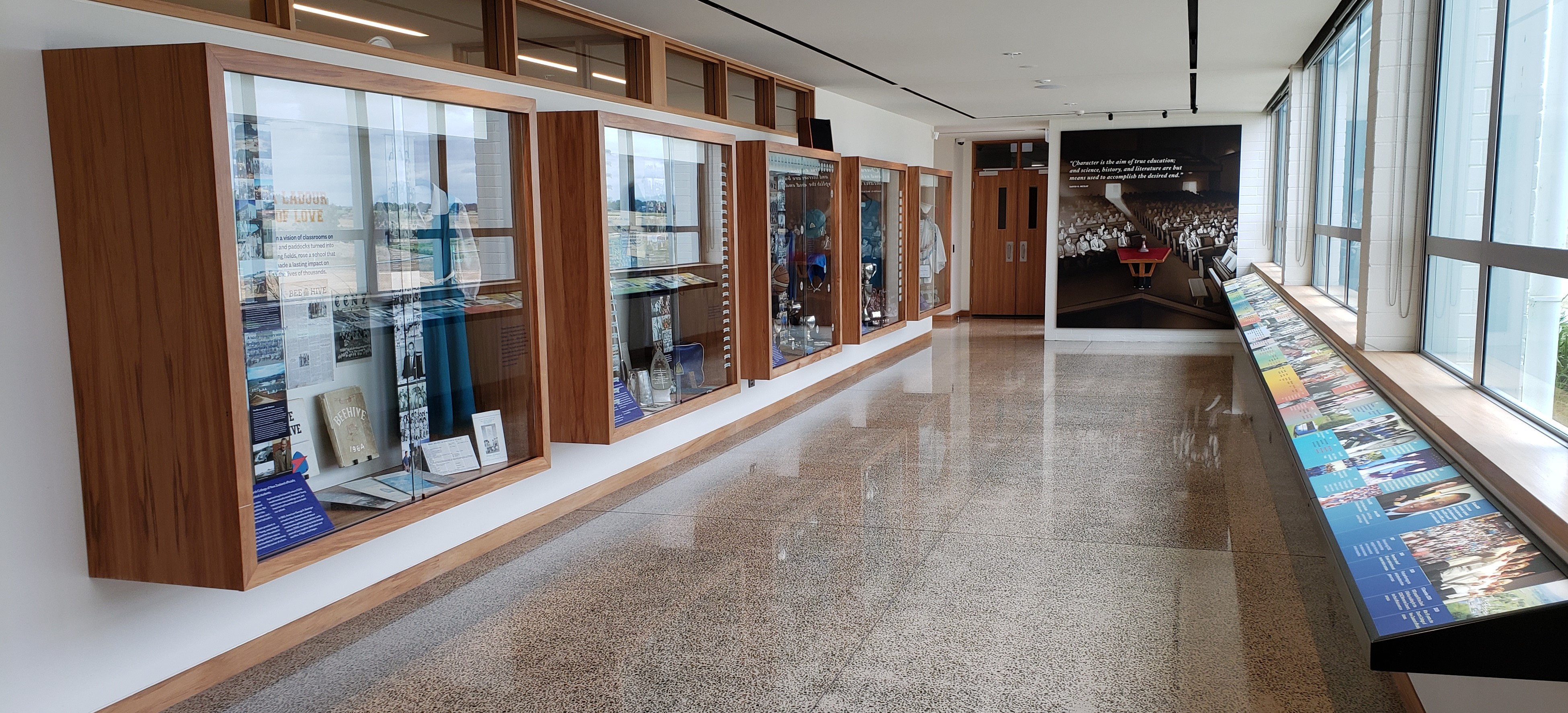
Church College of New Zealand exhibit
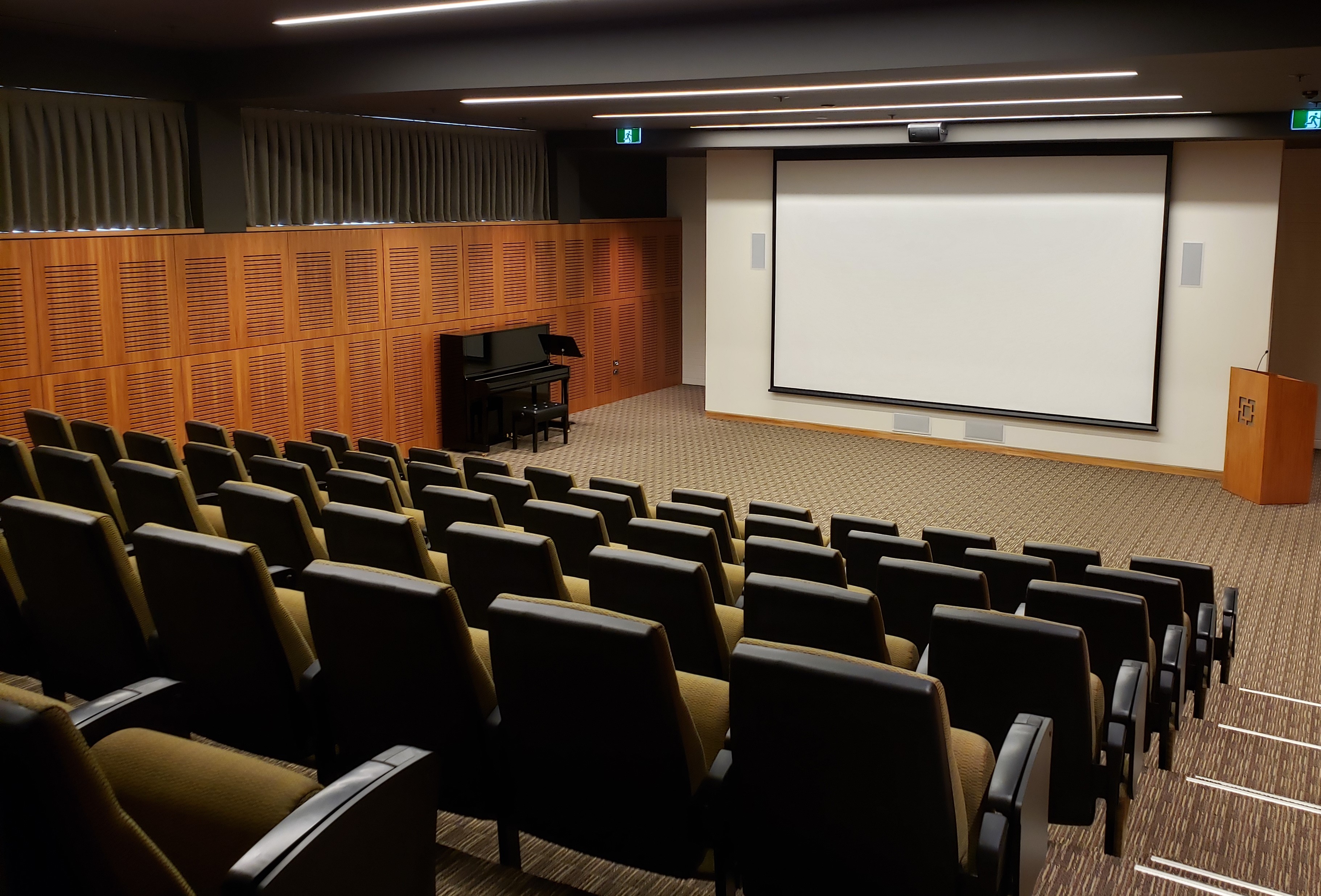
Theatre
Michael helps Nancy clean if the staff’s daily devotional and preparation meeting runs longer than usual; otherwise, he goes to his desk to continue working on whichever of his many projects seems most pressing. The assignment that usually takes precedence over all others is extracting less-computer-literate staff members from whatever technological pickle they have gotten themselves into. On our very first day of work in Hamilton, the tech crew from the Church’s Pacific Area office in Auckland happened to be here replacing every laptop in the Centre whose shelf-life had expired, throwing staff members into a tizzy when they discovered that their new hardware wasn’t syncing with existing peripherals. Elder H quickly became the office hero after he went around to each desk and made sure that everyone could scan and print from their workstations again.
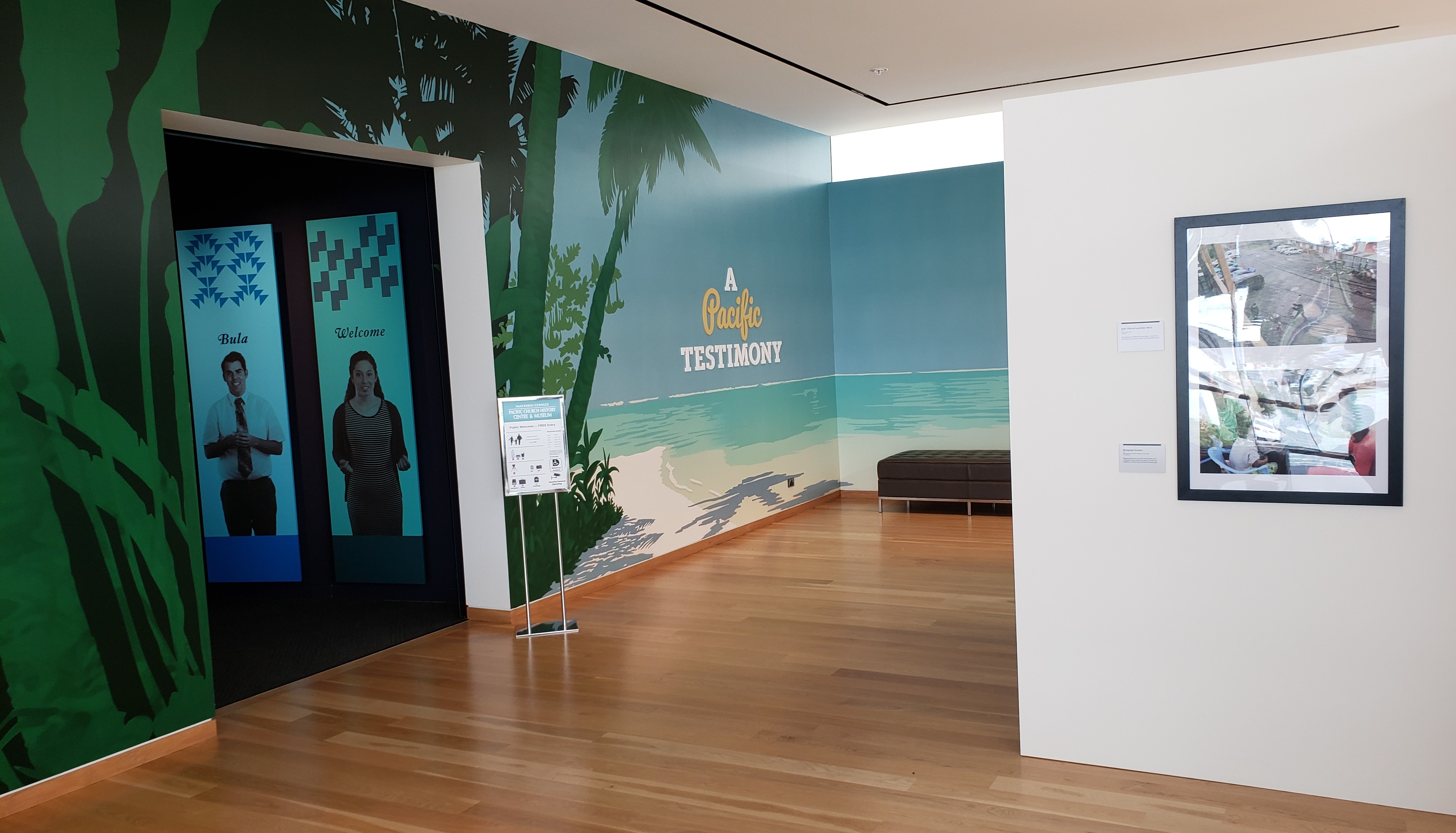
Museum entrance and temporary exhibit space
Another project Michael has undertaken is creating a series of illustrated cheat sheets to guide Centre staff and volunteers through the processes for using the various types of electronic equipment in the building. All our personnel—most of whom are over 65—need to know how to show a video in the 70-seat theatre or on any of our other media players, whether the content is stored on a conventional DVD, a Blu-ray disc, a USB stick, or someone’s personal laptop; they must be able to set up and adjust the volume on the lectern-mounted, handheld, and lapel microphones when an outside group requests use of the theatre for a special program; they need to know how to override the pre-set thermostat settings when the theatre is fully occupied and getting stuffy—you get the idea. So Michael has spent many hours over the past several weeks photographing equipment and screens to create a step-by-step illustrated guide; Nancy has edited the text and helped him make it more user-friendly.
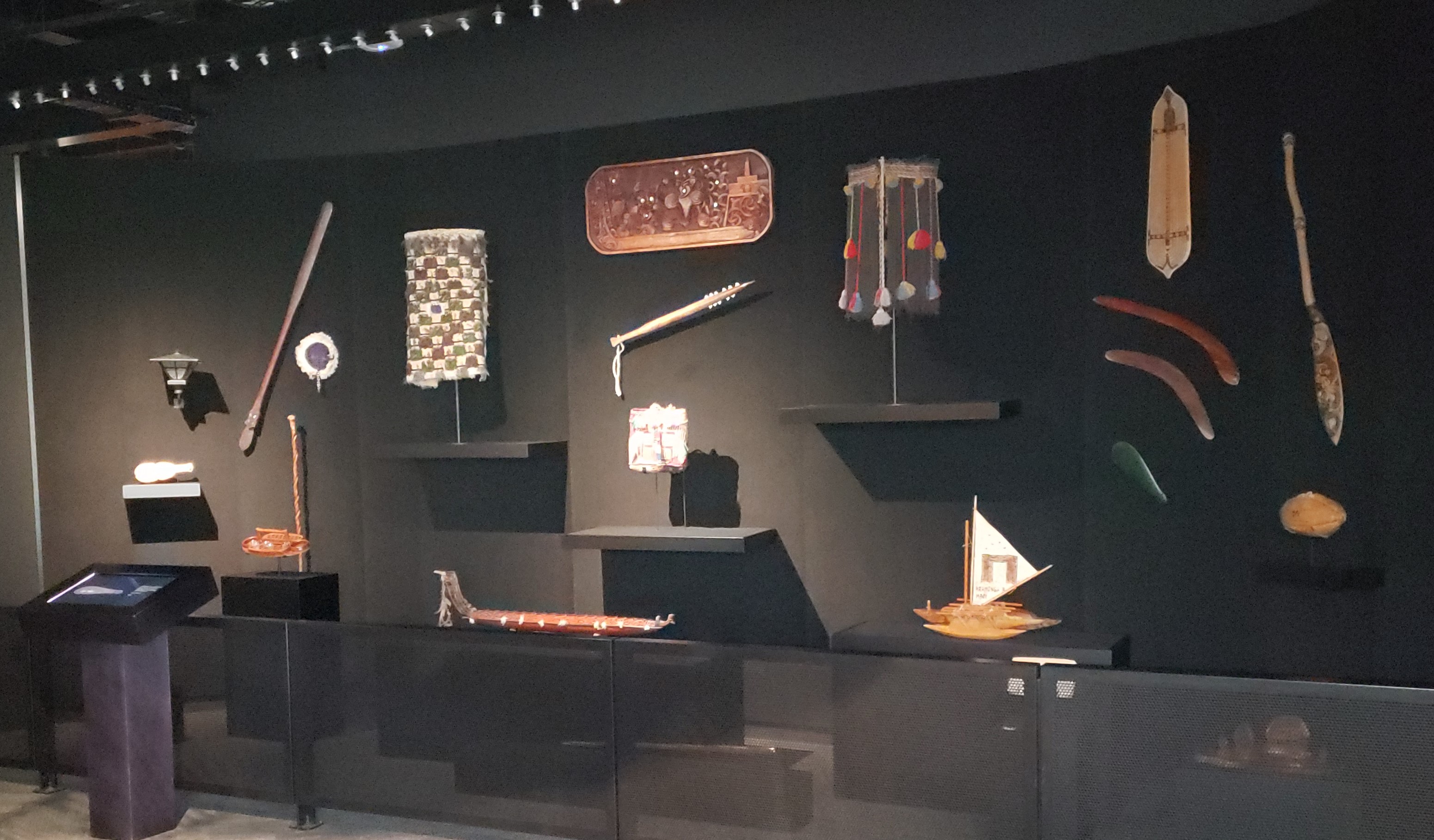
The museum’s Gift Room: Gifts from God, and gifts given in return
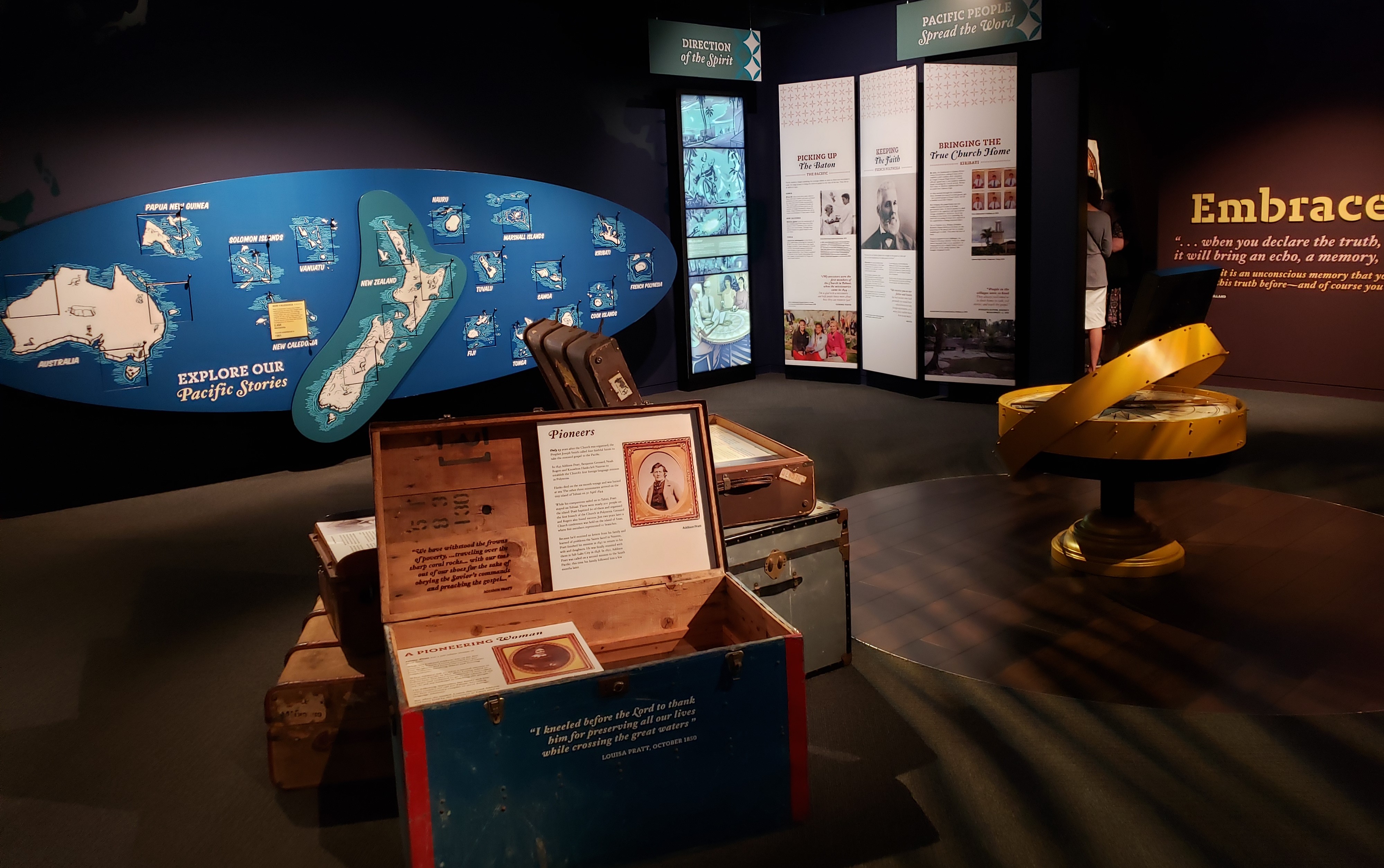
The Mission Room: How the restored gospel of Christ spread across the South Pacific
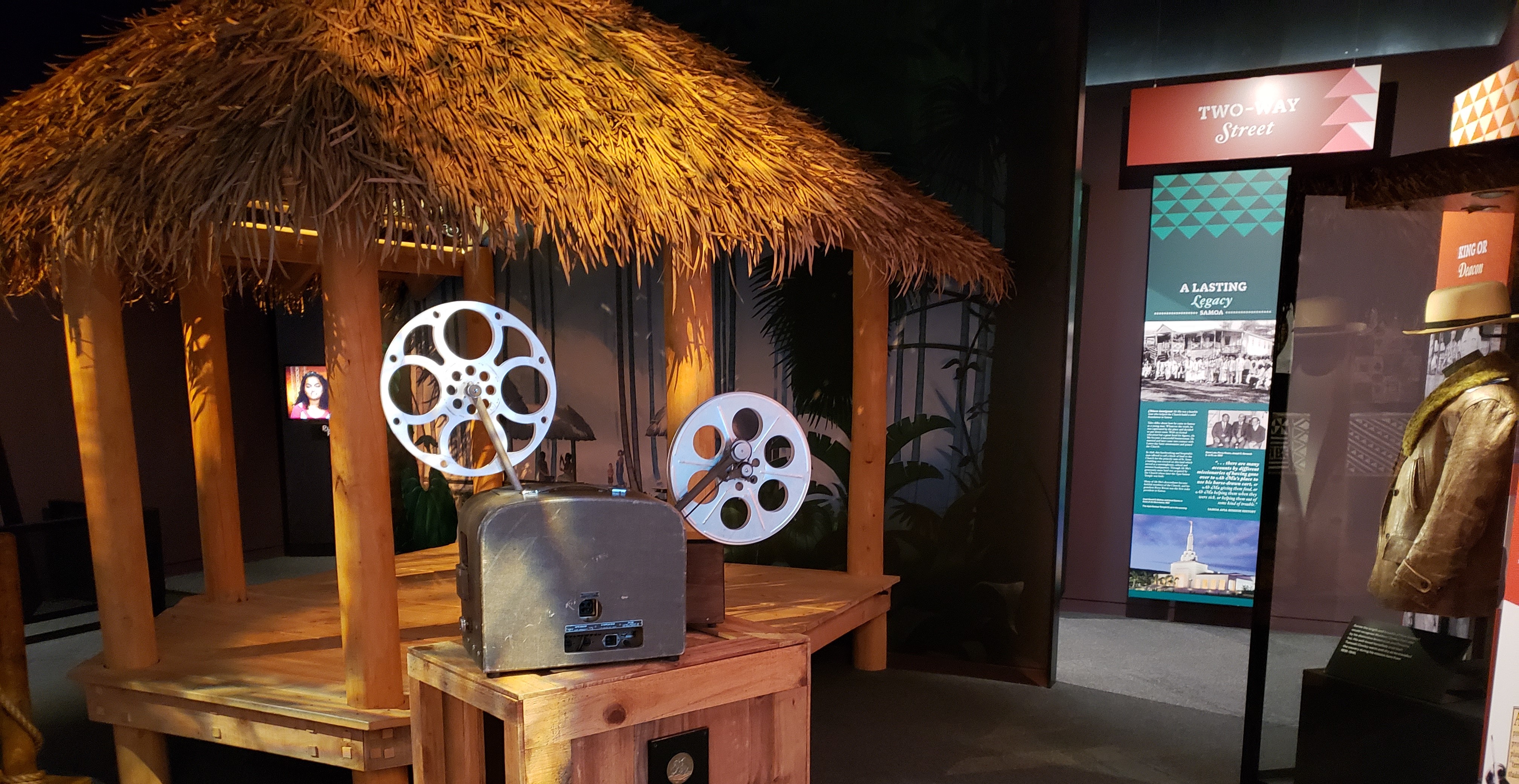
The Embrace Room: How individuals and communities embraced the gospel message
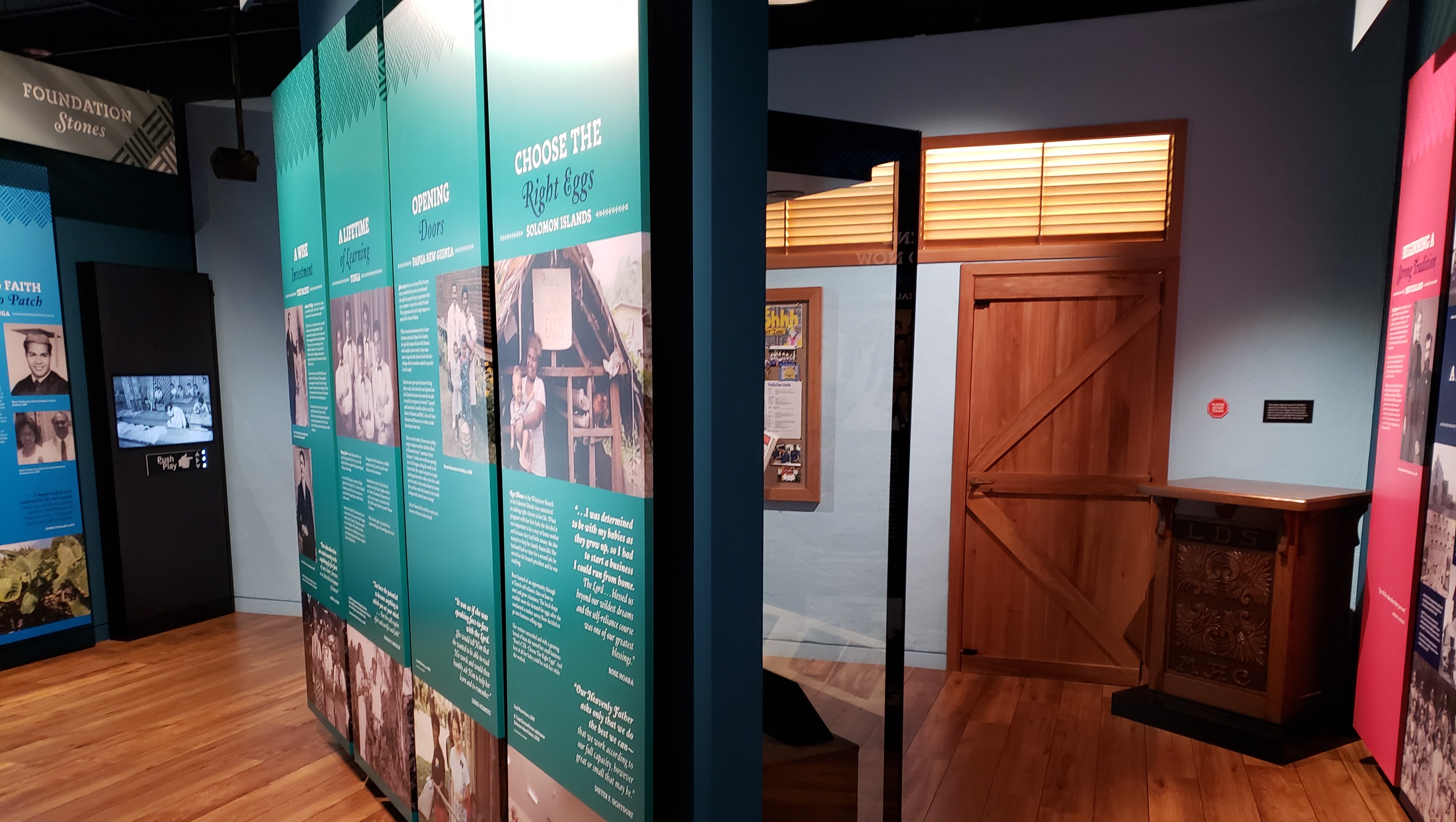
The Teach Room: How God’s people have helped each other learn and progress
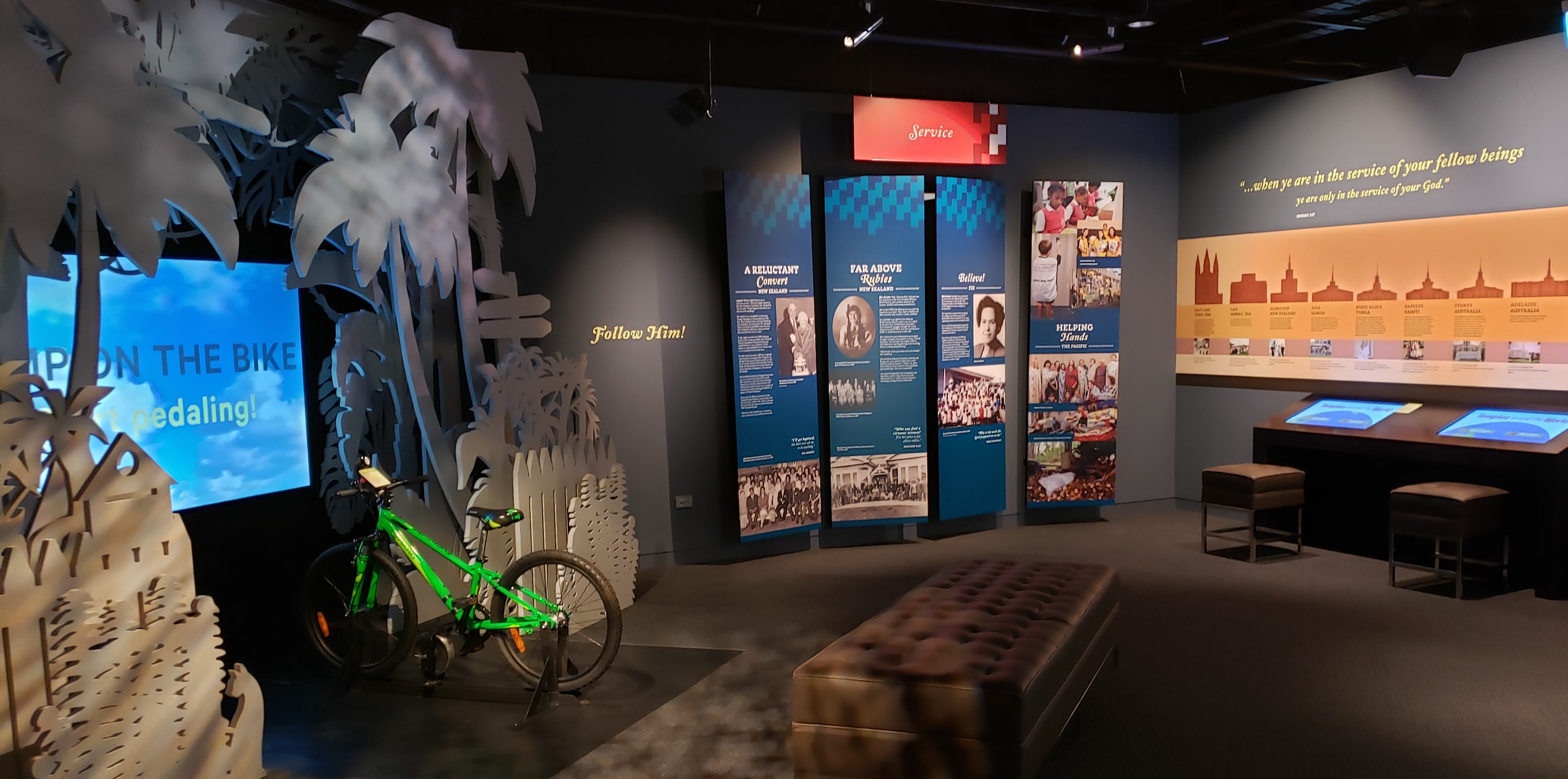
The Faithful Lives Room: How individuals have expressed their devotion and commitment to God
Meanwhile, Nancy also has been reorganizing the paper and digital files of her predecessor, revising (or trashing) outdated forms and protocol documents to reflect current practices, and renaming files so that she and others can more easily find what they’re looking for. Inconsistent digital filing plagues not only the procedural documents Nancy inherited, but also the MCPCHC’s entire artifact collection—and working to clean that up is likely to be our greatest challenge for the next twenty-two months.
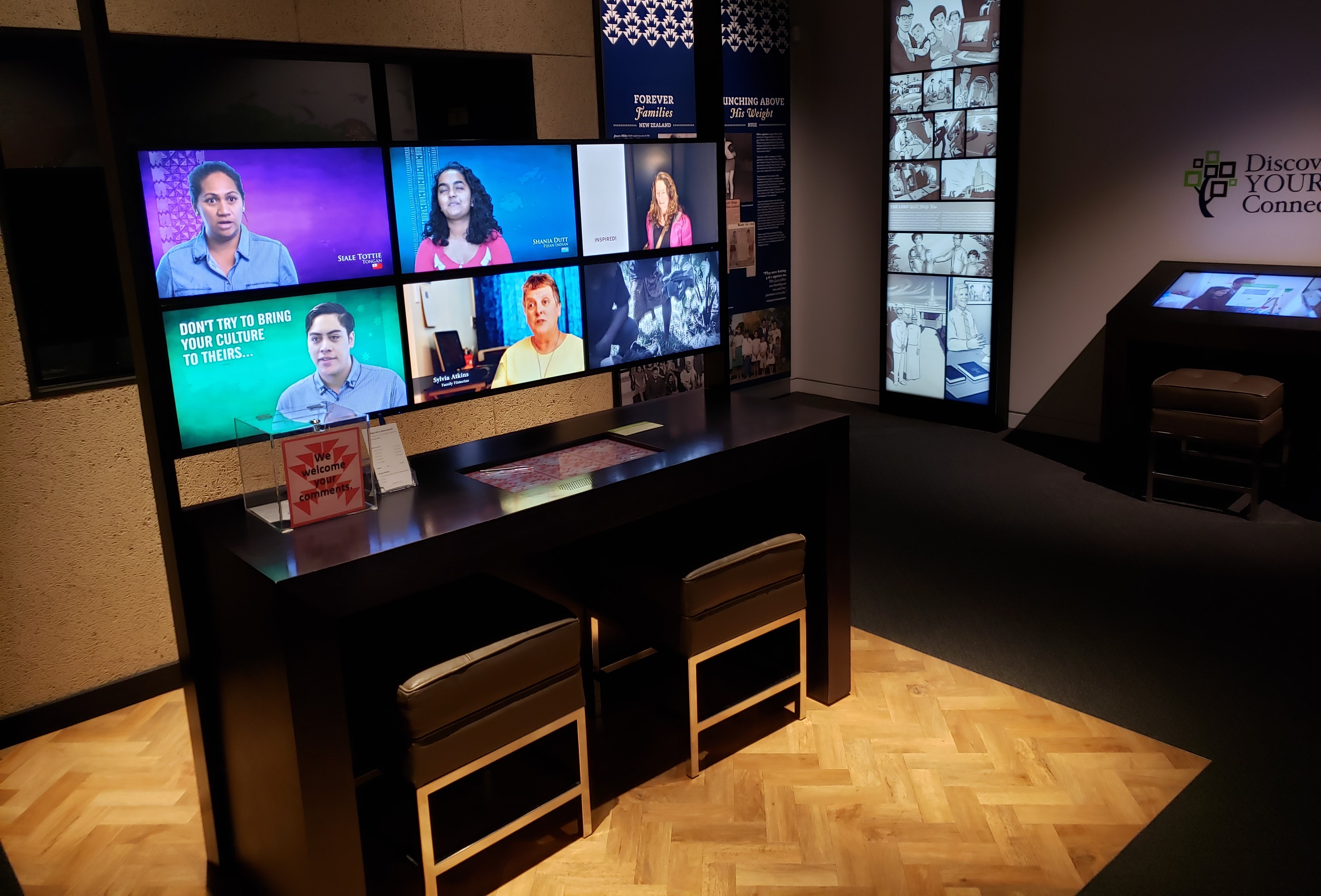
The Strive Room: How individuals strive to improve and come closer to God
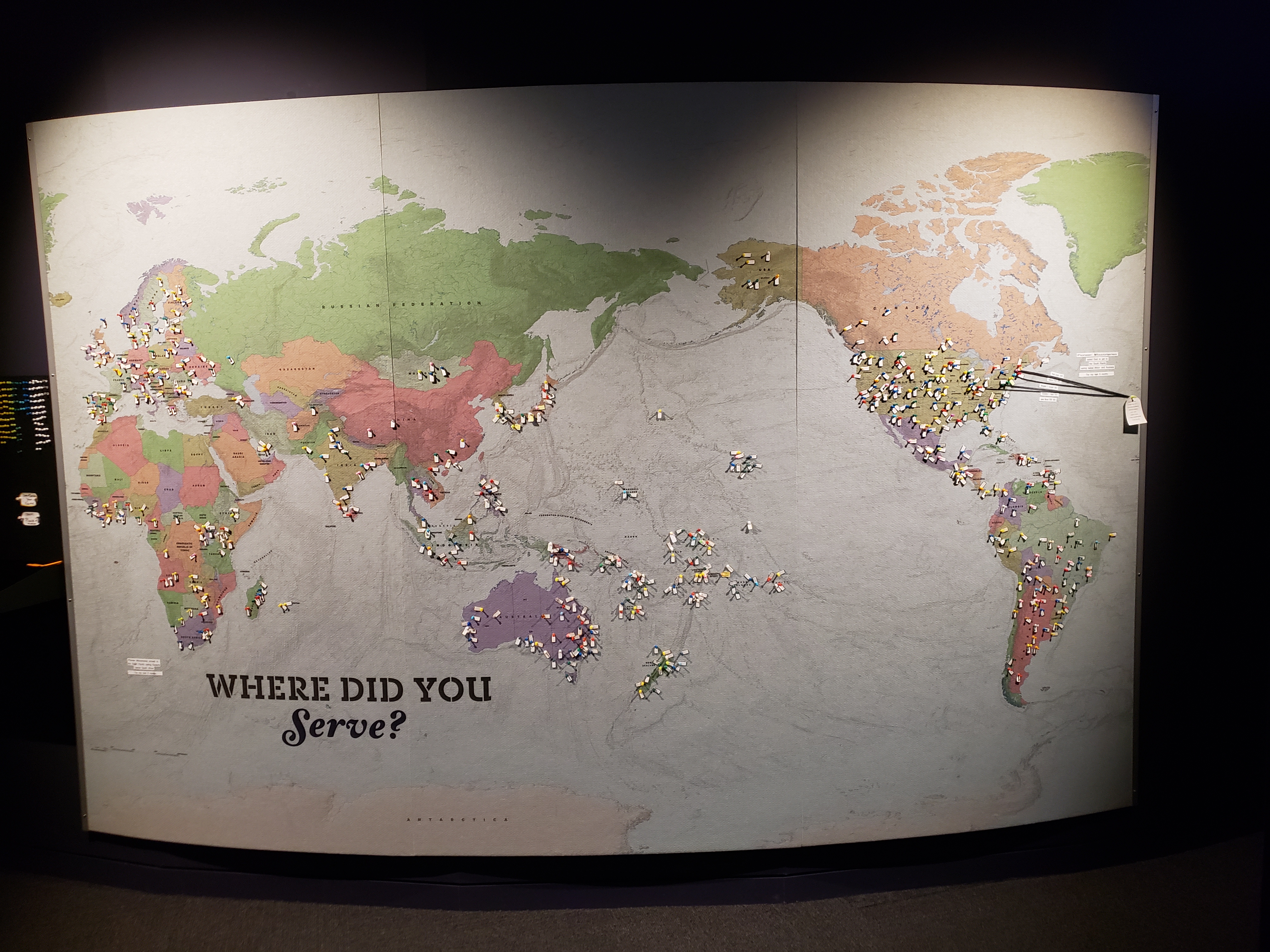
Where did you serve a mission? Visitors are invited to fill out a tag and pin it on the world map
Right now, both of us have taken on the challenge of becoming competent museum guides. Eva gave us a crash course on one of our first mornings here and has provided excellent, ongoing training-by-example. Because conducting tours and training volunteer guides will be among Nancy’s primary duties, she also has been studying online resources for museum docents provided by the Church History Department. Those offer some helpful pointers, but more useful has been spending time in the museum itself, becoming familiar with the displays and the stories that accompany them. Eva encouraged her to get to know the Centre’s experienced guides and tag along when they take visitors through the museum—an activity that has become one of her favorite pastimes. After a couple of weeks of this preparation, Nancy felt ready to lead eight young elders from the Auckland MTC through the museum, with backup from another senior missionary. A few days later, Michael and Nancy teamed up to lead a group of young sisters from the MTC—some of them English language learners—around the museum on our own. Our presentation was a little awkward, but the sisters were tolerant and the tour turned out to be a positive experience for everyone.
With regard to the daily technical support duties involving staff and their beginner desktop experience, Michael has touched everything from installing Office 365 (after the re-imaged new workstations were installed), replacing print drivers to software tool installation to recovering lost files to bird-dogging incident tickets that aren’t getting addressed, let alone resolved. A few days ago, Sister T informed him that her Outlook was broken because she couldn’t send files. It turned out she was trying to email four video files of 3 GB each! So, Michael had to contact corporate to find out what the email limits were—which, based on his past experience, was high at 25 MB. So he had to inquire around to find out how very large files could be sent, install the recommended tool, and then explain to Sister T how to use it.
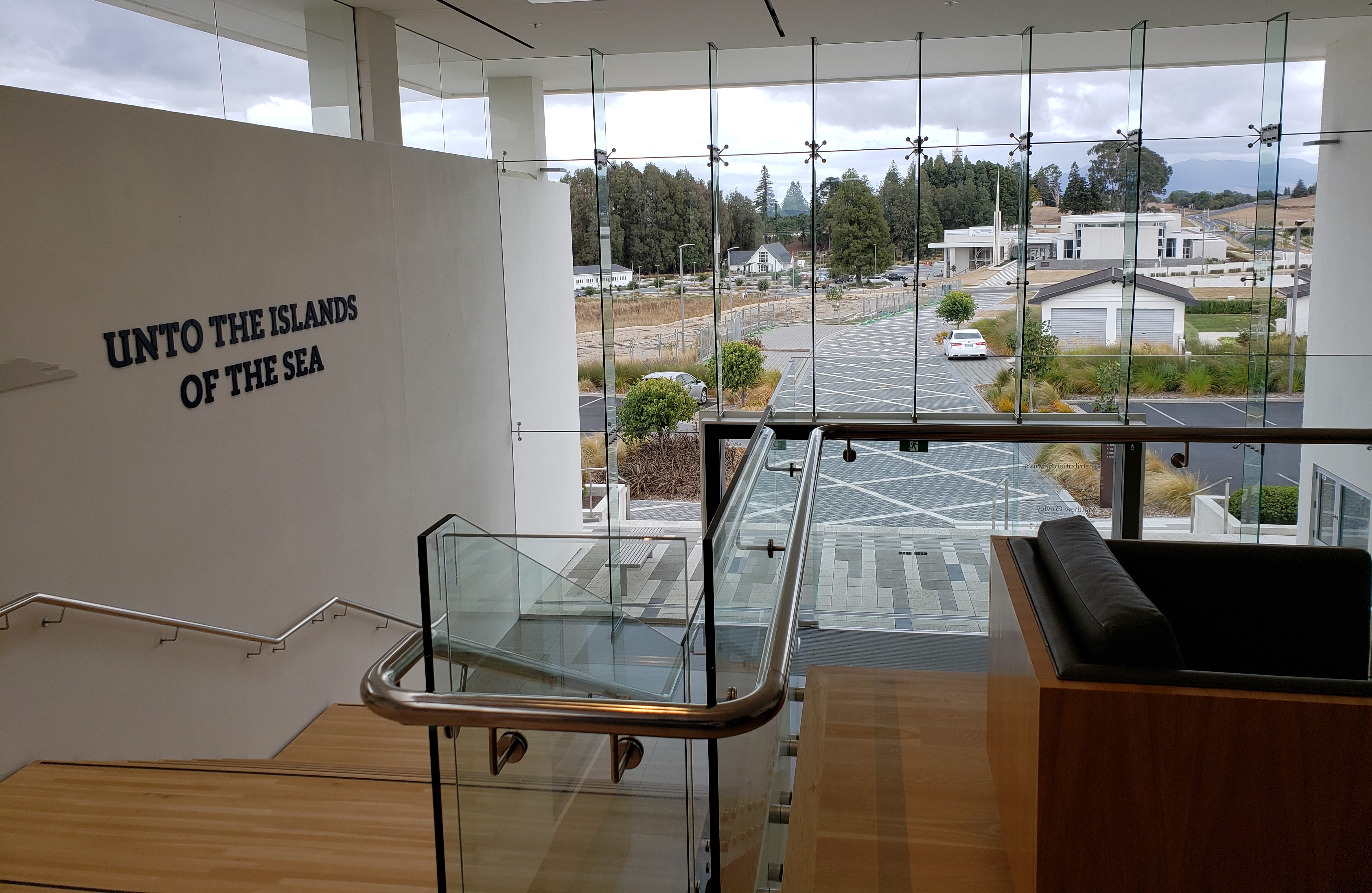
Looking down the stairs and through the doors onto the Temple View campus
The main reason that Barry and Eva wanted Michael to come to New Zealand was to clean up and bring organization to all the digital assets donated to the Church History Department from the Kia Ngawari Trust. This trust, established in 1972, is the repository for everything related to the history of the Church of Jesus Christ of Latter-day Saints in the South Pacific collected over three decades by Rangi and Vic Parker, who live here in Hamilton. The collection includes some tangible artifacts, journals, and other documents, but its most significant assets are 70,000 photographs—many from the nineteenth century— and an untold number of video assets that range from 8 mm footage of important events to hundreds of audio and video oral histories that Rangi and Vic taped themselves. However, no one is sure exactly how many assets the Kia Ngawari Trust actually contains. No one is sure how many have been digitized. No one is sure where the digital copies are located. And no one is sure which version of a digital file that has been duplicated many times over is the definitive one.
When the KNT was donated to the CHD in 2012, Rangi maintained access rights to every item, so she had free rein to make copies, rename files, reformat them, change their resolutions, or combine photos and videos using MovieMaker or PowerPoint to make personalized family histories for just about anyone who asked. As a consequence, her personal “sandbox” (as we call it) has 11,000 folders containing 550,000 individual files. (Yes, you read those figures correctly!)
To add to the confusion, little to no metadata has been captured for any of the digital assets. Fortunately, the Parkers can identify the location, date, and many of the people in almost every photograph (Rangi has prodigious mental recall), but they are reaching advanced years. Rangi is fighting cancer and other health issues, so we need to capture as much of the data in her head as we can, while we can.
Thus Michael put together a detailed proposal on how to approach the project and fed it up the organizational chain. Fortunately, his years at Fidelity had prepared him for dealing with layers of bureaucracy. No matter how it likes to think of itself, the Church of Jesus Christ of Latter-day Saints is just another huge global organization, and Michael is a very small cog in its machinery, literally “on an island somewhere in the Pacific.” Because the proposed project requires resources from the History Department in Salt Lake City to help us determine which digital files are the definitive ones, and since most of those resources will have to come from sister organizations and not the one we directly report to, it was no surprise that the proposal met with some resistance.
Michael thought that he could retire from playing corporate politics by becoming a full-time missionary instead of an IT project manager, but apparently he was mistaken. Once again, he is refining proposals and trying to influence others to provide resources to move the work forward. Before leaving for New Zealand, he often explained to non-LDS friends that his mission was not the type that involved building houses in Honduras; instead, he would be serving a “white-collar mission.” (To which Nancy would retort, “In the LDS Church, they’re all ‘white-collar’ missions,” referring to the required dress for men.) We had not been here long before we realized that our white-collar assignment as Church History Specialists means that we are less “missionaries” than unpaid full-time employees of the Church History Department. But Michael feels fortunate to have full support for his project from the director of the MCPCHC, as well as from the leaders of the Church’s Pacific Area office in Auckland, so he hasn’t given up. Hopefully, he will be able to report in a future post that the project is progressing.
Nancy, too, has been drafting a proposal, but her project is less problematic. The MCPCHC staff is planning to mount a new exhibit in our temporary exhibition space just before the temple reopens in the summer of 2021. Eva and Barry had come up with a title and a basic plan, so Nancy took their ideas and refined them into a description of the exhibit’s theme and key messages, adding a statement defining our target audience. Eva then sent the draft to Tiffany and the rest of our supervising team at the Church History Museum in Salt Lake. They are the ones who must initially approve any changes or additions to the museum at the MCPCHC, and the ones who will present our proposal to the final decision-makers (and funding-allocaters) up the ladder, so we were eager to get their feedback.
Eva wrote:
Hello Team,
Please see the attached documents that Sister H has prepared concerning our 2021 Exhibit. These drafts are a result of our discussion and collective vision for the project. —Sister G
Tiffany’s gratifying response came the next day:
Hi Sister G,
Thank you for sending these beautifully-crafted documents so quickly! You all knocked this assignment out of the park 😊—Tiffany
Since then, we have revised and re-revised the proposal in consultation with the Salt Lake team; Tiffany then took our work and crafted a beautifully formatted distillation, and formally presented it to the leadership of the Church History Department and the committee who controls the purse strings. We are still waiting for final approval, but so far everyone who has seen the proposal has been enthusiastic, and we in New Zealand have been directed to assemble a list of recommendations for artifacts, photographs, video recordings, and stories to include in the display.
The title that Barry and Eva chose for the new exhibit is “Sacrifice and Consecration: The Construction of the Hamilton New Zealand Temple.” Since we arrived at the MCPCHC, one of the most significant things we have learned about the history of the Church of Jesus Christ of Latter-day Saints in the South Pacific is the story of the building of the temple here in Hamilton during the 1950s—the first temple erected in the Southern Hemisphere. It’s a tale of tremendous faith, dedication, and sacrifice on the part of the Labour Missionaries who were called to serve on the construction crew, their families, and Church members all over New Zealand who contributed money and supplies to the project. But this is a piece of Pacific Church history that deserves its own blogpost; we hope you will be as eager to hear about it as we are to share it.
Leave A Comment